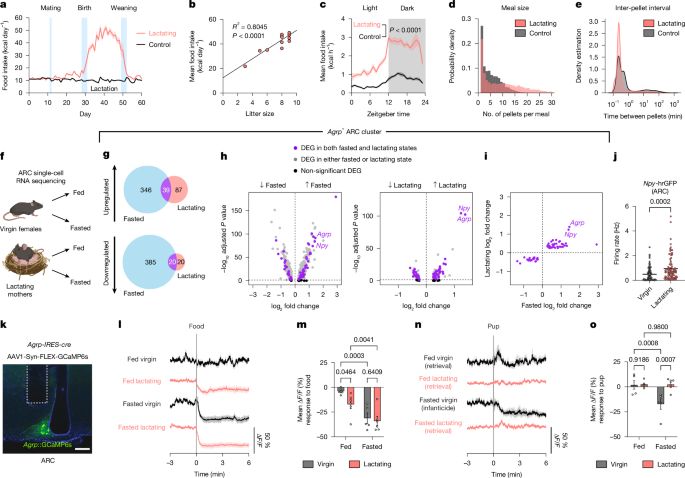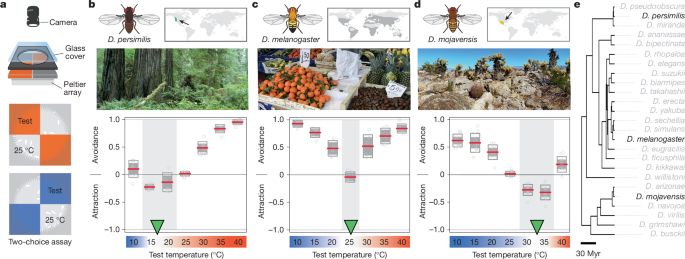I’m excited to share my PhD work on localized mRNAs and protein synthesis in cortical layer 1 on bioRxiv! www.biorxiv.org/content/10.1...
25.11.2025 16:58 — 👍 14 🔁 7 💬 1 📌 0
As a longtime fan of cool papers in @currentbiology.bsky.social, I am really thrilled to see this out!
This study sets the stage for understanding the origins of novel (vocal) behaviors.
Big shout out to the main architects of this work @xmikezheng20.bsky.social and @cliffscience.bsky.social
19.11.2025 18:42 — 👍 55 🔁 23 💬 8 📌 1
Amazing, congrats Kelsey!
22.10.2025 21:26 — 👍 2 🔁 0 💬 1 📌 0
🧠🌟🐭 Excited to share some of my postdoc work on the evolution of dexterity!
We compared deer mice evolved in forest vs prairie habitats. We found that forest mice have:
(1) more corticospinal neurons (CSNs)
(2) better hand dexterity
(3) more dexterous climbing, which is linked to CSN number🧵
22.10.2025 20:41 — 👍 368 🔁 122 💬 18 📌 26

a group of Drosophila erecta fruit flies on a small food patch. flies on white background
Excited to share our new #biorxivpreprint
We discovered that the fruit fly #drosophila erecta requires food odor to mate and arousal is further enhanced by social group motion.
Cross-species analysis of brain activity reveals a novel gate evolved from within a conserved circuit
shorturl.at/gGYm7
16.10.2025 06:33 — 👍 82 🔁 44 💬 12 📌 3
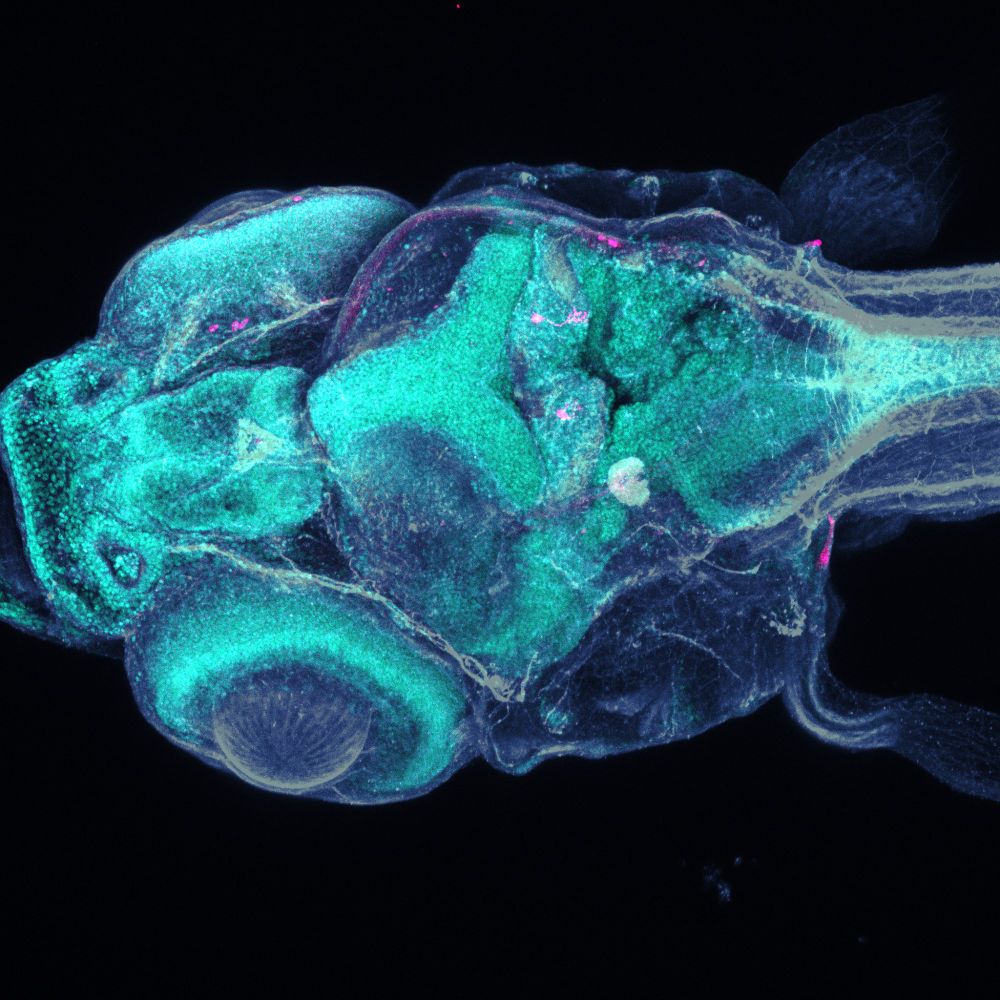
🚨Hiring Alert! Join Gregor Schuhknechts’s
new group Brain Algorithms and Circuits @mpibrain.bsky.social !
🧠 Fully funded PhD & Postdoc
🐟 Larval #zebrafish model
🔬 Imaging, electrophysiology, EM
💻 #SystemsNeuroscience
👉 brain.mpg.de/schuhknecht
01.08.2025 13:49 — 👍 3 🔁 4 💬 0 📌 0
Postdoctoral Position (f/m/d) at the Chair of Behavioral Physiology & Sociobiology
Biocenter of the University of Würzburg Am Hubland 97074 Würzburg
We are looking for a Postdoc (up to 5 years) who wants to study neural mechanisms of spatial memory in honeybees.
This includes tetrode recordings in behaving honeybees.
Application Deadline is 1st of October 2025.
More details:
www.biozentrum.uni-wuerzburg.de/en/services/...
01.08.2025 08:44 — 👍 49 🔁 42 💬 1 📌 5
Thanks Ivan, and congrats on your amazing work!
31.07.2025 09:01 — 👍 0 🔁 0 💬 0 📌 0
🧵8/8 We conclude that evolution adjusted the role of the dPAG in the computation of escape, thereby raising the escape threshold in P. polionotus.
Special thanks to co-first Katja Reinhard and co-last Karl Farrow for superb collab, to @hhmi.org for 💰, and to the 🐭 for holding fascinating insights 🥳
23.07.2025 15:05 — 👍 10 🔁 0 💬 4 📌 0
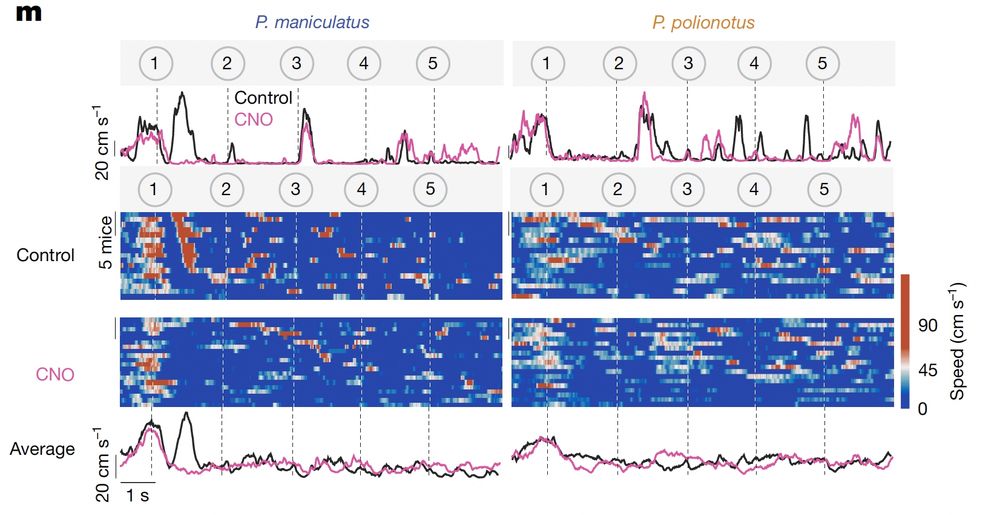
🧵7/8 When referees requested loss-of-function expts, @arnausd.bsky.social and Chen Liu jumped in and carried us to the finish line.
They found that chemogenetic inhibition of dPAG during looming delays escape onset in P. maniculatus, such that the species appear almost identical!
23.07.2025 15:05 — 👍 5 🔁 0 💬 1 📌 0
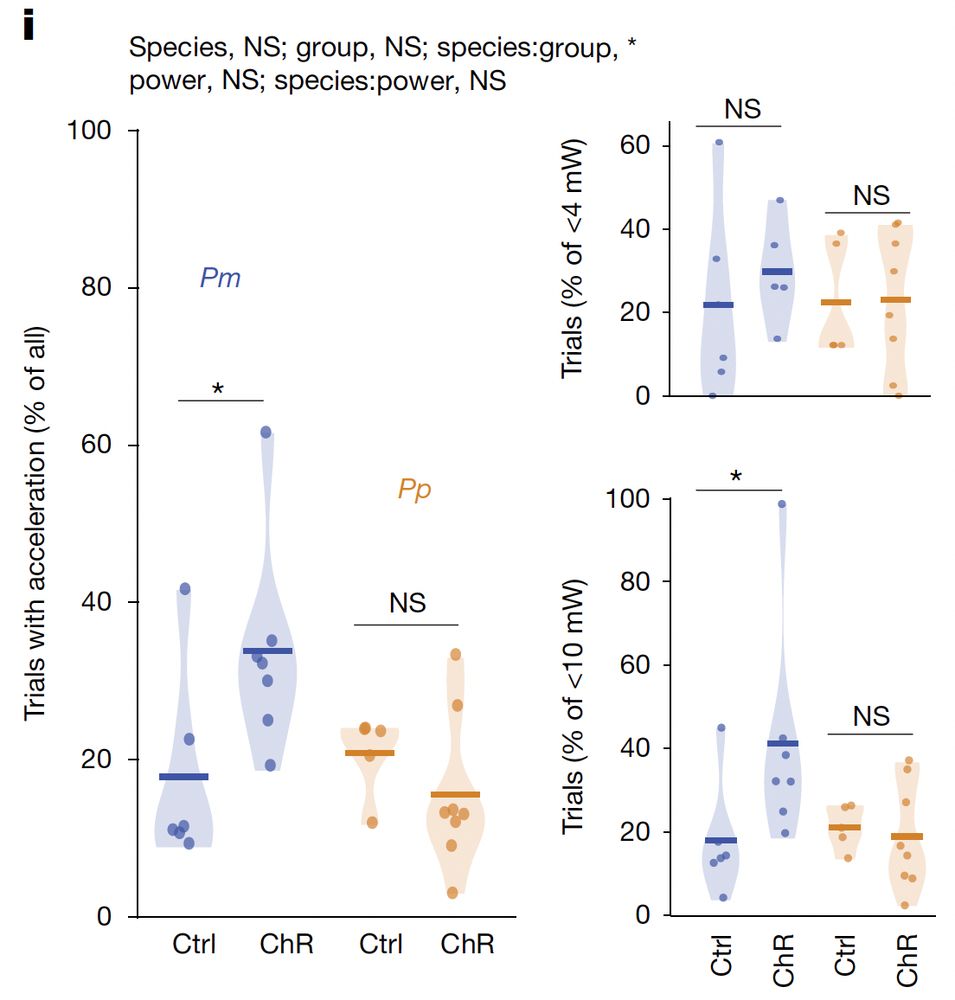
🧵6/8 To test for a causal role of the dPAG, I joined Katja in Belgium, and with help from undergrad Julie Murmann, we set up optogenetics in these wild mice.
Remarkably, dPAG activation alone triggered similar species differences - suggesting sufficiency of this brain region for the behavior.
23.07.2025 15:05 — 👍 5 🔁 0 💬 1 📌 0
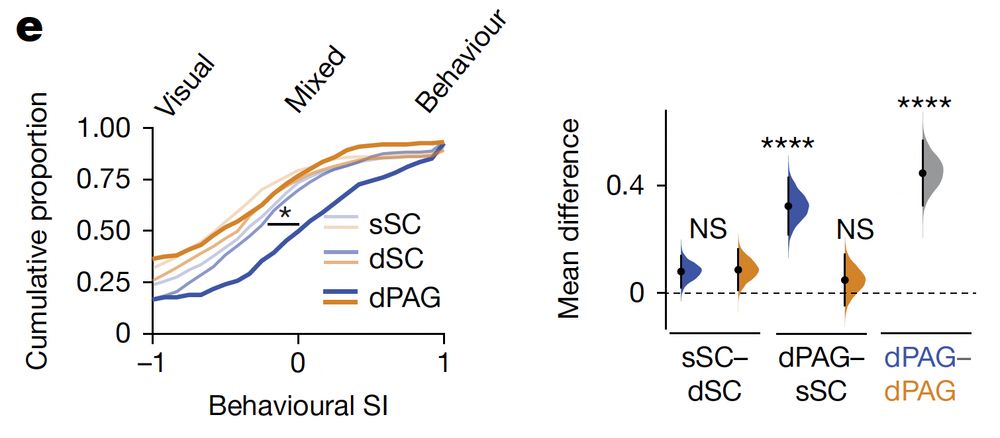
🧵5/8 To dissect further, we shipped mice to Belgium and teamed up with the @farrowlab.bsky.social: @katjareinhard.bsky.social, now w/ her own lab, figured out how to record from escaping mice - and with @bramnuttin.bsky.social, found that dPAG neurons in the two species encode behavior differently.
23.07.2025 15:05 — 👍 6 🔁 0 💬 1 📌 0
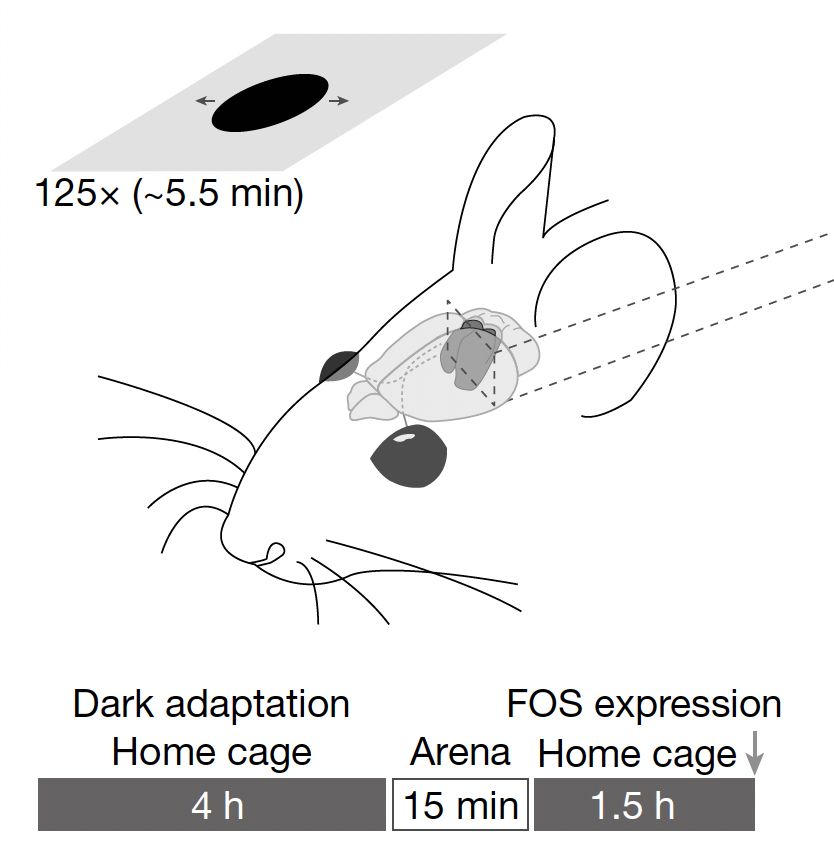
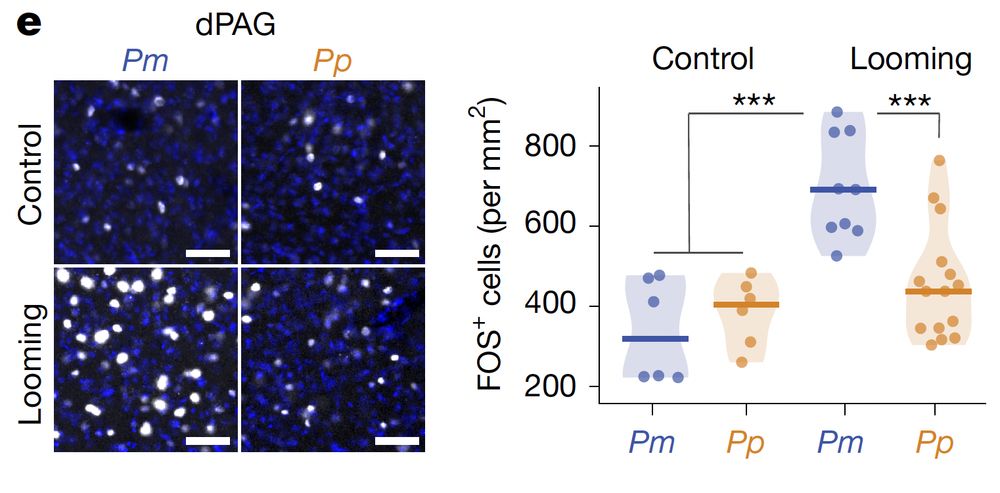
🧵4/8 Indeed, by staining for FOS in mice exposed to visual threat, we found that retinorecipient superior colliculus is activated in both species.
However, the periaqueductal gray (dPAG), known for its role in escape, was activated much less in P. polionotus, even when they strongly escaped!
23.07.2025 15:05 — 👍 7 🔁 0 💬 1 📌 0
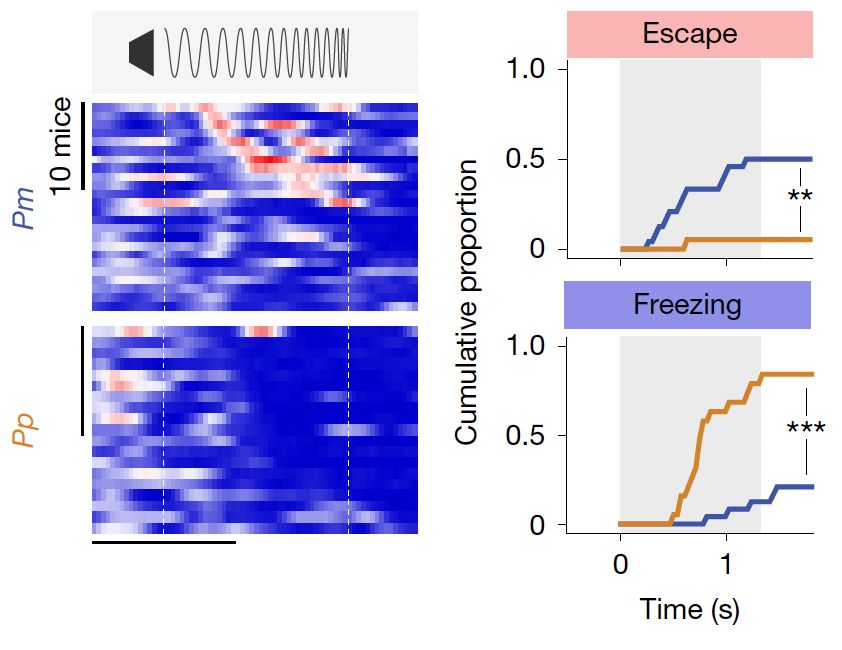
🧵3/8 We were curious: where did evolution act in the brain to adjust behavior?
To narrow down our search, we exposed mice to an auditory stimulus – and observed the same behavioral differences.
This suggested a mechanism downstream of sensory detection, relevant across modalities.
23.07.2025 15:05 — 👍 5 🔁 0 💬 1 📌 0
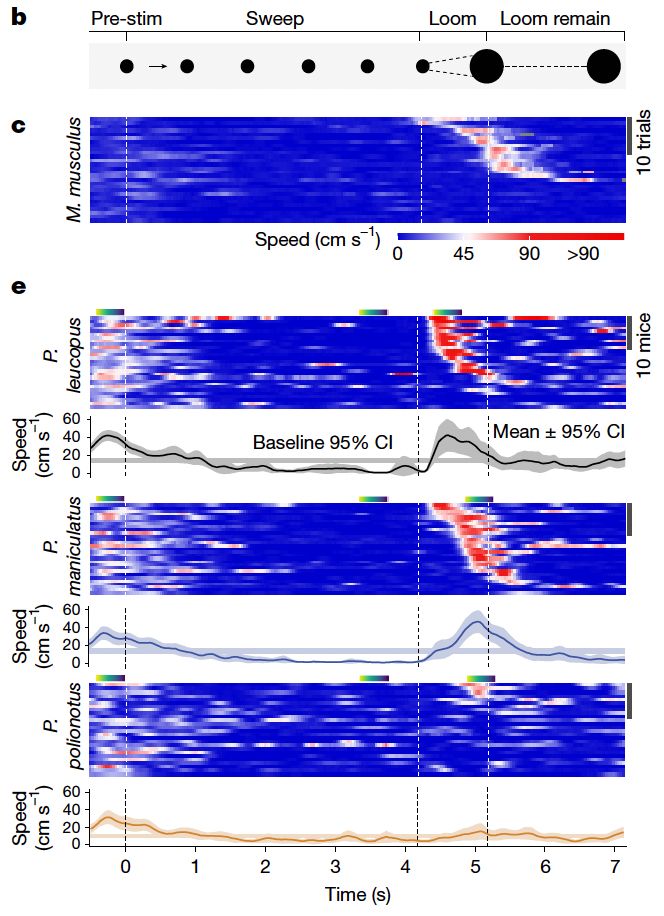
🧵2/8 Inspired by work in lab mice, Hopi and I asked how wild-derived deer mice respond to visual threat.
With help from undergrad Tori Tong, we discovered robust variation: while P. maniculatus escaped, much like Mus, sister species P. polionotus, from open habitats in Florida, briefly froze!
23.07.2025 15:05 — 👍 6 🔁 0 💬 1 📌 0
🚨Very happy that my PhD work is now out in @nature.com!
We discovered that evolution, by acting in the midbrain, shifted the threshold to escape in Peromyscus mice, to fine-tune defensive strategies in different environments
www.nature.com/articles/s41...
This was a truly collaborative effort! 🧵⬇️
23.07.2025 15:05 — 👍 472 🔁 102 💬 26 📌 5
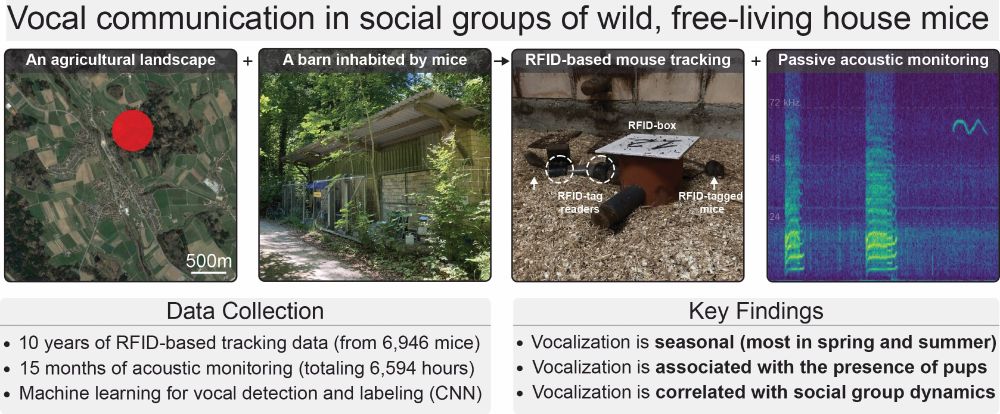
Graphical abstract for "Vocal communication is seasonal in social groups of wild, free-living house mice."
The abstract has, from top to bottom, a title, four middle image panels, and two bottom text panels.
Image title: "Vocal communication in social groups of wild-free living house mice"
Middle image panels from left to right: (1) An aerial snap shot of the region where the study site is located, an agricultural landscape in rural Switzerland. (2) An image of the study site, a small barn in the forest inhabited by mice. (3) An image of a radio frequency identification (RFID) box used to track mouse social interactions. A mouse is entering the box from the left while another sits outside. (4) A spectrogram showing example vocalizations - one low frequency squeak and one ultrasonic call - recorded from an RFID box.
Bottom panels:
Left: Data Collection
- 10 years of RFID-based tracking data (from 6,946 mice)
- 15 months of acoustic monitoring (totaling 6,594 hours)
- Machine learning for vocal detection and labeling (CNN)
Right: Key Findings
- Vocalization is seasonal (most in spring and summer)
- Vocalization is associated with the presence of pups
- Vocalization is correlated with social group dynamics
Very happy to share the latest from my postdoc!
10 yrs of mouse social networks + 1.25 yrs of acoustic data ➡️ insight into vocalization & sociality in a wild population of your favorite lab model 🐁
paper: bit.ly/4n93yyD
data: bit.ly/4lfFBEk
code: bit.ly/4kNnMwx
#bioacoustics #neuroskyence
1/8
18.06.2025 18:25 — 👍 138 🔁 48 💬 4 📌 8
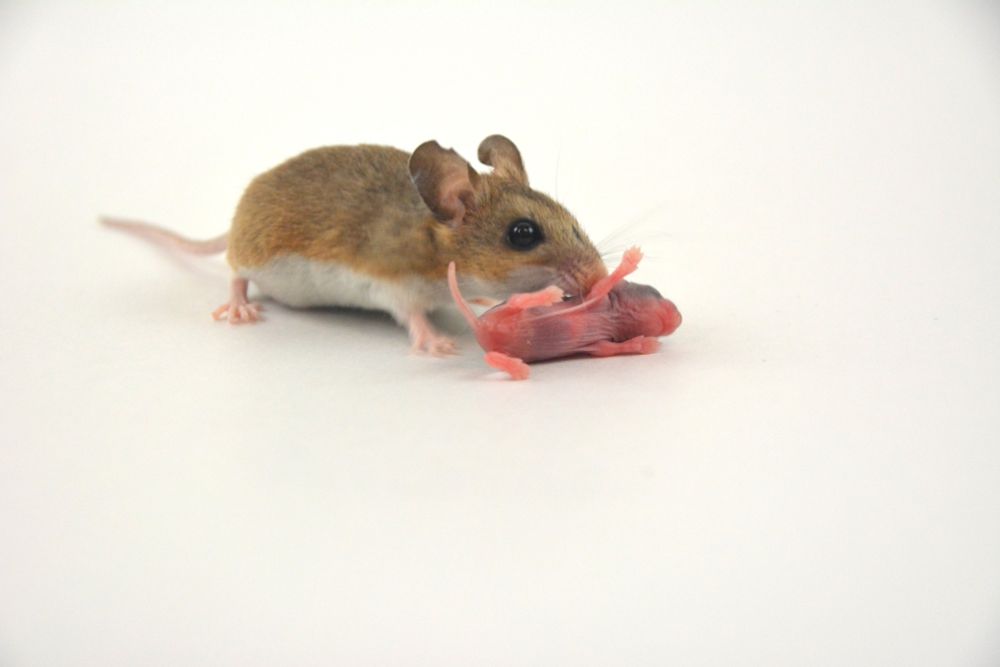
The parenting styles of deer mice
Single-nuclei RNA-sequencing sheds new light on how two closely related species of deer behave differently when mating and caring for young.
A nice, layperson writeup of my latest work, which is now out on eLife!
TLDR: Using snRNA-seq, we find cell type abundance differences and sex-biased gene expression differences that may explain innate differences in mating + parenting behavior
elifesciences.org/digests/1031...
10.04.2025 14:54 — 👍 15 🔁 8 💬 3 📌 0
This is a few weeks old, but LIZARDS NEVER GET OLD 🦎😇 Find out what makes them so interesting in our Creature Column @naturemethods.bsky.social
12.02.2025 14:41 — 👍 11 🔁 5 💬 0 📌 0
Having flashbacks to my time in the US during Trump‘s first term. Lots of sympathy and hugs to everyone on the ground. Hang in there ❤️
05.02.2025 09:03 — 👍 0 🔁 0 💬 0 📌 0
Congrats Saikat, amazing work!!
03.02.2025 09:02 — 👍 2 🔁 0 💬 0 📌 0
SfN is thrilled to launch a new webinar series in collaboration with the @kavlifoundation.bsky.social exploring how different species’ nervous systems acclimate to environmental changes!
#NeuroSky
23.01.2025 14:59 — 👍 8 🔁 3 💬 1 📌 0

Gilles Laurent is awarded the Louis-Jeantet Prize for Medicine in 2025
The 2025 Louis-Jeantet Prizes are awarded to Gilles Laurent, director at the Max Planck Institute for Brain Research in Frankfurt and to Veit Hornung, professor at the Ludwig Maximilian University of ...
Congratulations to @mpibrain.bsky.social director Gilles Laurent for being awarded the 2025 Louis-Jeantet prize for Medicine! The @louisjeantetfdn.bsky.social recognizes Laurent's pioneering work on the operations of #neurons and dynamics of neuronal networks. More infos 👉 bit.ly/4hqk6ie
21.01.2025 14:15 — 👍 62 🔁 19 💬 1 📌 2
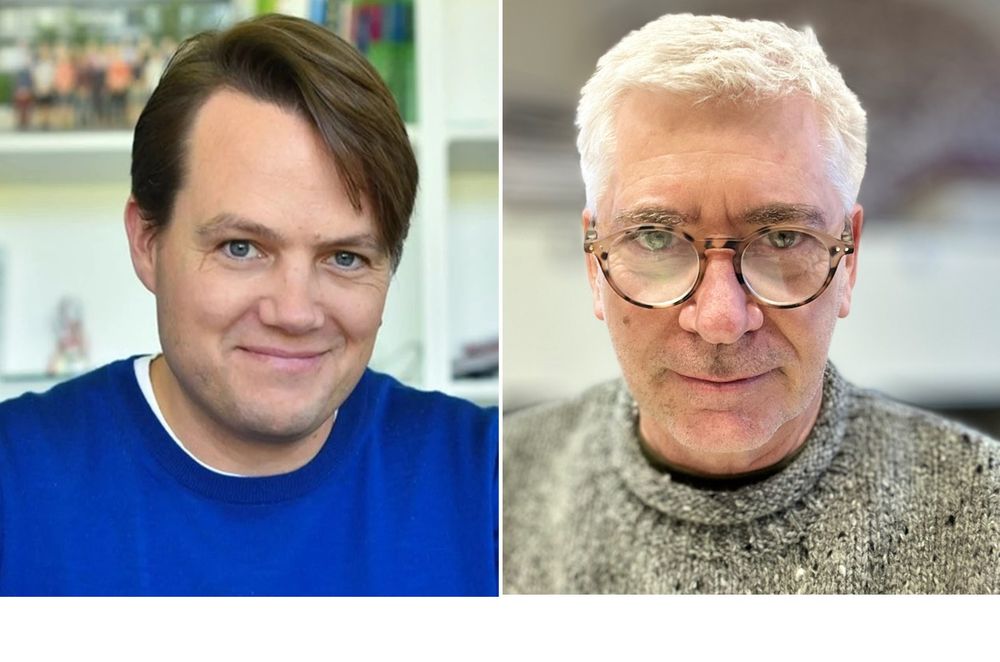
📢 The Louis-Jeantet Foundation is happy to announce the 2025 #LouisJeantetPrizes, awarded to VEIT HORNUNG @v-hornung.bsky.social @genecenter-lmu.bsky.social and to GILLES LAURENT @ maxplanck.de
CONGRATULATIONS!!!
👉 jeantet.ch/en
👇 follow thread
21.01.2025 10:17 — 👍 24 🔁 10 💬 1 📌 1
CNRS researcher, @iins_bordeaux, "Synapses and neural circuits in behaviour" team
https://scholar.google.com/citations?hl=en&user=kQcFSucAAAAJ
www.linkedin.com/in/mario-carta-a572ba263
Neuroscientist, curious about the dynamics of mRNA and proteins at synapses. Postdoc at MPI for Brain Research, Schuman Lab. she/her
Max Planck Institute for Biological Intelligence, Kornfeld group @ Munich / MRC LMB @ Cambridge 🧠 Connectomics ✨
The only Max Planck Institute in the US, unlocking curiosity-driven discoveries about neural circuits and brain function.
The European Molecular Biology Laboratory drives visionary basic research and technology development in the life sciences. www.embl.org
Neurobiologist interested in the circuit basis of territorial behaviors and their relevance for human fear and anxiety. Interim Head of EMBL Rome.
PhD candidate @MPIBR, Schuman lab
Developmental Biologist working at the Francis Crick Institute. Neural tube, morphogens, and gene regulatory networks. Editor-in-chief, Development.
London · briscoelab.org
Prof. of Animal Behavior, Freie Universität Berlin. Brain and Behavior Lab.
Interested in Neuroethology, Brain Loops and Acoustic Communication.
Sensory Neuroecology Lab. Mosquitoes, moths, and chemicals. Professor at the University of Washington, Department of Biology riffelllab.org
neuroscience and behavior in parrots and songbirds
Simons junior fellow and post-doc at NYU Langone studying vocal communication, PhD MIT brain and cognitive sciences
Neuroscientist @crick.ac.uk asking how information is processed in the brain.
Odours. Circuits. Neurotechnology. Synchrotrons. BCIs.
Co-founder Paradromics
Twitter: @AndreasTSchafer
Ornithologist and Evolutionary Ecologist at the University of Oxford - natural history, science, cycling
Lecturer at the University of Bristol. Bumblebees, Animal cognition, Behaviour, Ecology, Conservation, Pesticides, Husband, Dad. He/him. 🐝
https://siviterharry.wixsite.com/harrysiviter
For Research. For Berlin.
Associate Professor at Princeton University studying development, genetics, evolution, and everything in between. 🦇🦆🦘🐿️🐅🦎 www.mallarinolab.org
Makes insects play video games. ಬಿಡಿಸುಗ
Computational neuroscientist @princetonneuro.bsky.social deciphering natural and advancing artificial intelligence.
she/her/🇹🇼
phd candidate, Lovett-Barron lab UCSD 🐠🧠🔬




